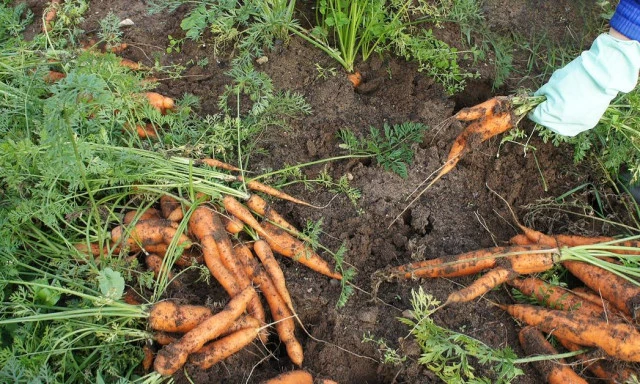Beneficials in Your Garden
You will often hear tell of the beneficial insects and other organisms (goodies) in your garden that help you control the pests (baddies) and protect your plants and flowers. The ‘baddies’ are the pests, weeds and diseases that you can identify in the Kiwicare Problem Solver or listed in the Problems section of this site. But do you know who the 'goodies' are and what they do?
Many of the beneficial organisms in your garden are insects but others include birds, lizards, viruses, bacteria and fungi.
Of the insects, many people will be aware that ladybugs are predators of aphids and help keep the pest numbers down. All insect pests have their predators and parasites and most of these are themselves insects. The pests may also be affected by diseases (bacterial, fungal and viral) that keep them under control.
There are also competitors. On occasions, there may be organisms that compete with the pest but do not do the harm the pest does and are therefore not themselves pests. E.g. Trichoderma fungi suppress the growth of pathogen populations in the rhizosphere (soil surrounding plant roots) through competition, and thus reduce disease development. Healthy thick lawn grasses can out-compete weeds, shading them out and occupying space that weeds would grow.
Control of pests with their natural predators, parasites, competitors and diseases is regarded as biological control.
Here are some beneficial insects and other organisms you should encourage in your garden and what they do to help you.
Predators
Predators of insect pests such as aphids, mealy bugs, scale, thrips and others include birds, lizards, frogs, ladybugs, beetles, true bugs, lacewings, hoverflies, spiders, wasps, and predatory mites. They directly feed on the pest insects at various life stages. In most cases, the juvenile stages (larvae and nymphs) are more vulnerable to predation.
Parasites
A parasite is an organism that lives and feeds in or on a larger animal (host). Parasites of insects often referred to as parasitoids by entomologists, are parasitic only in their juvenile stages and kill their host just as they reach maturity. They tend to develop as larvae, either on or in, a particular life stage of a single individual host.
- Wasps – Unlike the colonial wasps, parasitic wasp tend to be solitary. These wasps lay their eggs in or on their preferred host and the developing larvae feed on the host, usually while it is still alive. There are wasp parasitoids that parasitise aphids, caterpillars, whitefly, vine hoppers, leaf miners, scale insects, mealybugs and most other insect pests.
- Flies – The Tachinid flies parasitise many types of insects. Eggs laid on caterpillars will hatch as larvae that burrow into the caterpillar host, some lay the eggs on plants and enter the caterpillar through being eaten. The larvae feed on the inside of the caterpillar eventually killing it, pupating and emerging as an adult fly.
- Nematodes – Nematodes are microscopic, simple roundworms. They kill insects by entering them and releasing a bacterium that multiplies within the insect.
Competitors
Competitive displacement is where one organism displaces another in the environment. They will normally share a need for some aspect of their environment, e.g. food source or breeding site. In some cases, this principle can be used to displace pest organisms. However, all too often, it is the pest that has displaced another organism.
For example, the house fly (Musca domestica) has several competitors for breeding sites and the food (decaying matter) that the larvae feed on. The adults of these competitors have habits different from those of the house fly and do not tend to invade homes or interact with human activities in the annoying fashion of house flies.
Diseases
Insects and other pests suffer from a range of diseases caused by bacteria, fungi and viruses in the same way as we humans do. Outbreaks of infections can have significant effects on pest populations. Many of the diseases are specific to species or groups of species and are not likely to harm other animals. Such pathogens can be used to control pests and pest populations safely without harm to beneficial organisms. E.g. a naturally occurring bacterium (Bacillus thurengiensis Kurstaki, Btk) that when eaten by caterpillars (larvae of moths and butterflies) kills the caterpillars but it has no effect on other animals. There are fungal diseases that infect flies and will kill them, perhaps leaving the zombie-like flies sitting frozen to the leaf or other surfaces.
Other Beneficials
Not all organisms that are beneficial in the garden are beneficial because of their usefulness in controlling pests, weeds and diseases. Many organisms are beneficial -
- though symbiotic relationships with garden plants such as Rhizobium bacteria around roots which fix atmospheric nitrogen and pass it to the plant roots,
- fungi and bacteria that break lawn thatch and leaf litter down into humus, returning nutrients to the soil,
- bees and other insects that pollinate flowers,
- and mycorrhiza that colonises the host plant's root tissues (rhizosphere) and assists the roots in the uptake of nutrients in the soil.
So, all you can do to help these beneficial organisms will be good for your garden.
David Brittain
Kiwicare


